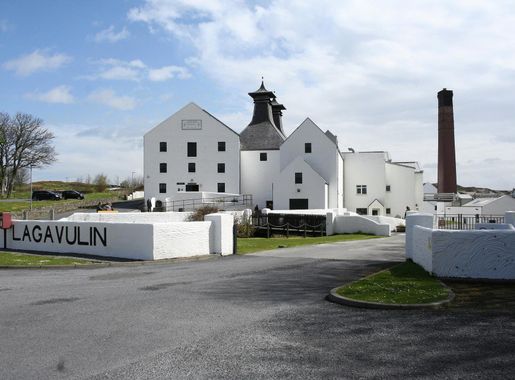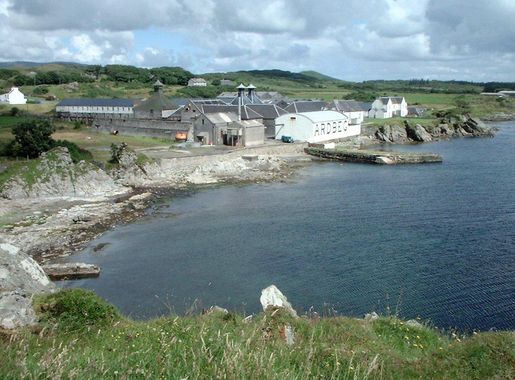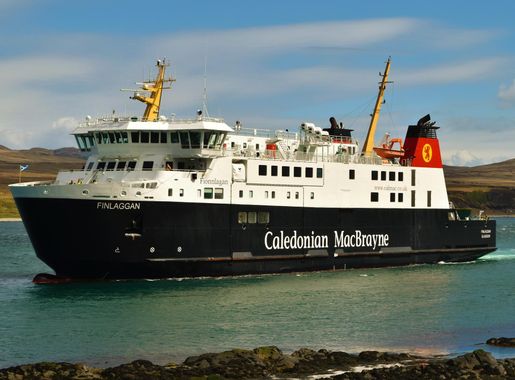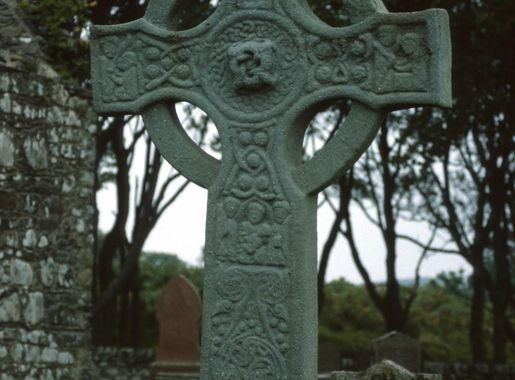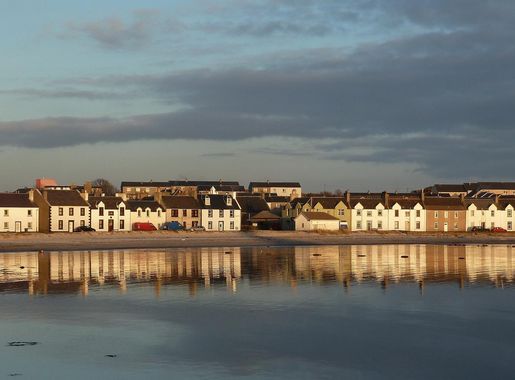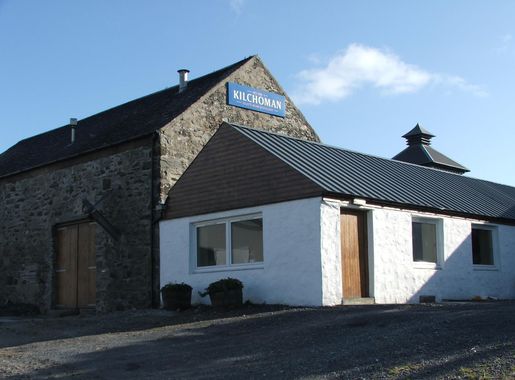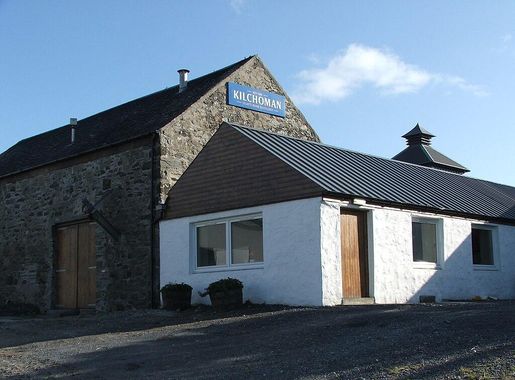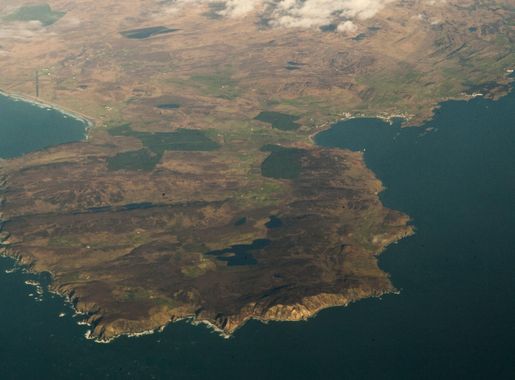
The Enchanting Isle of Islay: Scotland’s Whisky Heaven
Discover the Isle of Islay: A whisky lover's paradise, nature enthusiast's dream, and a haven of tranquility in Scotland's Inner Hebrides.
Nestled in the Inner Hebrides, the Isle of Islay is a gem in Scotland's crown. Known as the 'Queen of the Hebrides,' Islay boasts stunning landscapes with its rolling hills, sandy beaches, and rugged coastline. The island is a paradise for nature lovers and offers a serene escape from the hustle and bustle of city life. Islay's rich history and culture are deeply rooted in its whisky heritage. Home to nine working distilleries, including world-renowned names like Laphroaig, Lagavulin, and Ardbeg, the island is a pilgrimage site for whisky enthusiasts. Each distillery offers unique tours and tastings, providing an immersive experience into the art of whisky-making. Beyond whisky, Islay is a birdwatcher's delight, with numerous species of birds, including rare ones, making it their home. The island also offers various outdoor activities such as hiking, cycling, and golfing. The scenic walks along the coast and through the countryside are particularly popular, providing breathtaking views at every turn. The local culture is warm and welcoming, with traditional music sessions in cozy pubs and engaging local festivals. The island’s rich history can be explored through its ancient sites, including standing stones, historical churches, and the ruins of Finlaggan, the ancient seat of the Lords of the Isles.
Local tips in Isle of Islay
- Book distillery tours in advance, especially during peak seasons, to ensure availability.
- Pack layers and waterproof clothing – Islay's weather can be unpredictable.
- Rent a car to fully explore the island's scenic drives and hidden gems.
- Don't miss the Machir Bay sunset; it's one of the most beautiful sights on the island.
- Visit the local markets and shops for unique Islay crafts and souvenirs.
The Enchanting Isle of Islay: Scotland’s Whisky Heaven
Nestled in the Inner Hebrides, the Isle of Islay is a gem in Scotland's crown. Known as the 'Queen of the Hebrides,' Islay boasts stunning landscapes with its rolling hills, sandy beaches, and rugged coastline. The island is a paradise for nature lovers and offers a serene escape from the hustle and bustle of city life. Islay's rich history and culture are deeply rooted in its whisky heritage. Home to nine working distilleries, including world-renowned names like Laphroaig, Lagavulin, and Ardbeg, the island is a pilgrimage site for whisky enthusiasts. Each distillery offers unique tours and tastings, providing an immersive experience into the art of whisky-making. Beyond whisky, Islay is a birdwatcher's delight, with numerous species of birds, including rare ones, making it their home. The island also offers various outdoor activities such as hiking, cycling, and golfing. The scenic walks along the coast and through the countryside are particularly popular, providing breathtaking views at every turn. The local culture is warm and welcoming, with traditional music sessions in cozy pubs and engaging local festivals. The island’s rich history can be explored through its ancient sites, including standing stones, historical churches, and the ruins of Finlaggan, the ancient seat of the Lords of the Isles.
When is the best time to go to Isle of Islay?
Iconic landmarks you can’t miss
Peatzeria - Restaurant and Takeaway
Experience the taste of Italy in Bowmore with Peatzeria's delicious pizzas and Italian dishes, perfect for every palate on the scenic Isle of Islay.
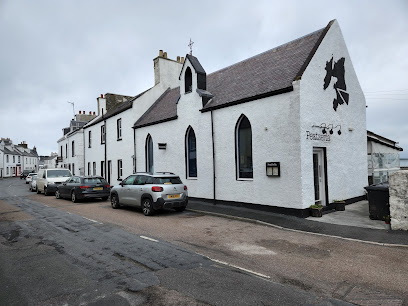
Laphroaig Distillery
Explore the iconic Laphroaig Distillery on the Isle of Islay, where rich heritage meets exceptional single malt Scotch whiskey.
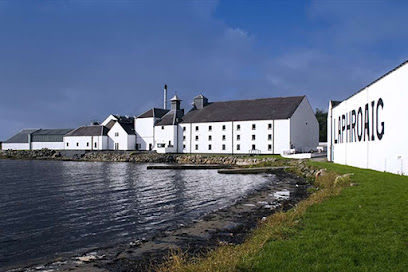
Kilchoman Distillery
Discover the essence of Islay at Kilchoman Distillery, where tradition meets craftsmanship in every drop of their exquisite whisky.
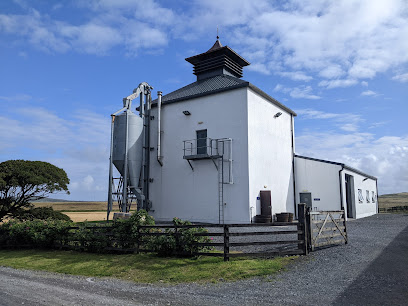
American Monument
Discover the American Monument on the Isle of Islay: a captivating tribute surrounded by stunning coastal landscapes and rich history.
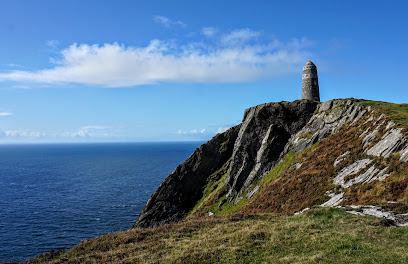
The Machrie
Discover The Machrie, a luxurious hotel on the Isle of Islay, offering exquisite dining, world-class golf, and stunning coastal views.
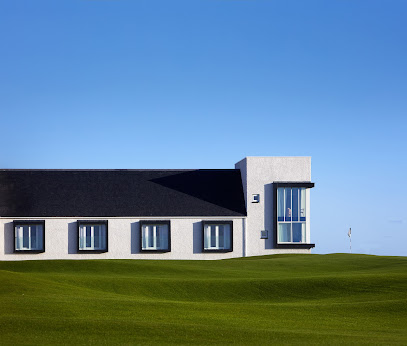
Bowmore Distillery
Explore the historic Bowmore Distillery on the Isle of Islay, where tradition meets craftsmanship in every drop of exceptional whisky.
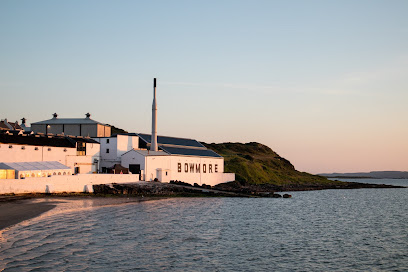
Kildalton Cross
Discover Kildalton Cross on the Isle of Islay, a remarkable historical landmark showcasing Scotland's ancient Celtic craftsmanship and spiritual heritage.
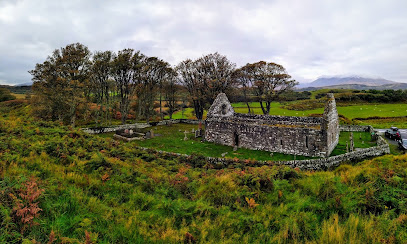
The Museum of Islay Life
Explore the rich heritage and captivating stories of the Isle of Islay at The Museum of Islay Life, a must-visit destination for culture enthusiasts.

Carraig Fhada Lighthouse
Explore the scenic Carraig Fhada Lighthouse on Islay, where maritime history meets breathtaking coastal views and serene natural beauty.
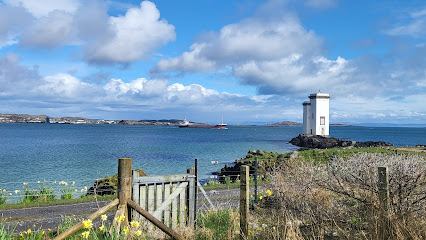
Skerrols House
Experience Scottish hospitality at Skerrols House, your tranquil guest house on the stunning Isle of Islay, surrounded by breathtaking landscapes.
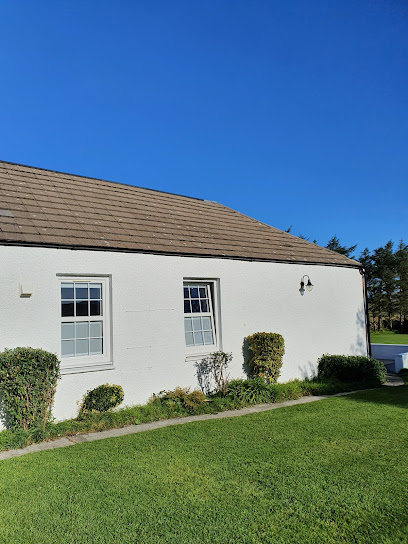
South Islay Parish: Kilarrow Church
Discover the serene beauty and historical significance of Kilarrow Church, a charming landmark on Islay's enchanting landscapes.
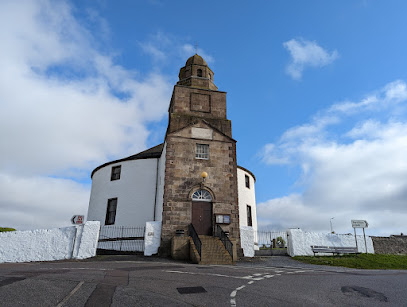
Persabus farm, Accommodation and Pottery
Discover the charm of Persabus Farm in Islay, where cozy accommodations meet the art of pottery in a serene countryside setting.
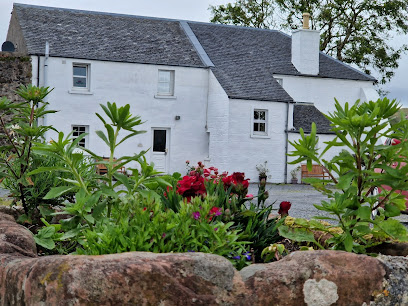
Dunyvaig Castle
Discover the historical charm and breathtaking views of Dunyvaig Castle on the stunning Isle of Islay, a must-visit for history lovers and nature enthusiasts.
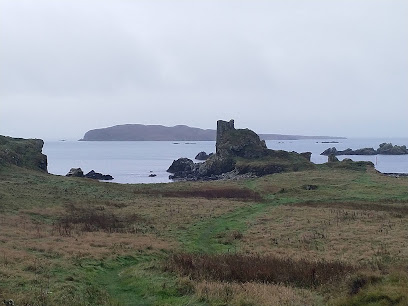
Kilnave Chapel and Cross
Discover the serene beauty and rich history of Kilnave Chapel and Cross on the Isle of Islay, a hidden gem for every traveler seeking a unique experience.
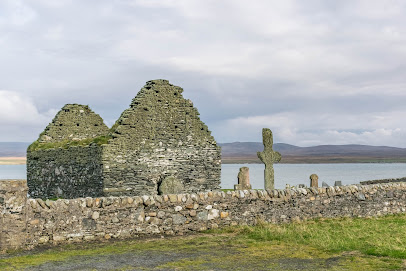
Tormisdale Croft Crafts
Discover the essence of Islay at Tormisdale Croft Crafts, where local artisans create beautiful handmade treasures reflecting the island's rich culture.
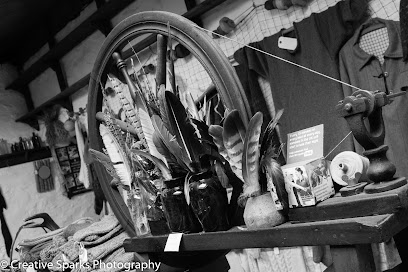
Unmissable attractions to see
Lagavulin Distillery
Explore the iconic Lagavulin Distillery on the Isle of Islay, where rich flavors and scenic beauty combine for an unforgettable whisky experience.
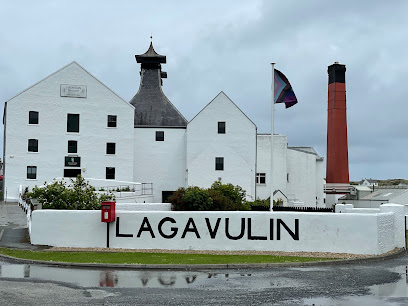
Laphroaig Distillery
Explore the legendary Laphroaig Distillery on the Isle of Islay, where tradition meets the art of whiskey-making in a stunning coastal setting.
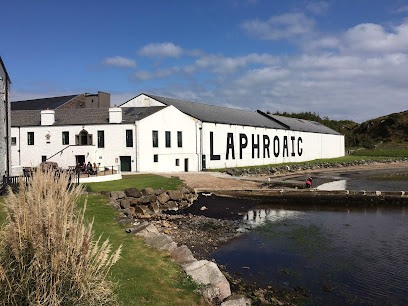
Ardbeg Distillery
Experience the rich heritage and exceptional flavors of Ardbeg Distillery, a top destination for whisky lovers on the beautiful Isle of Islay.
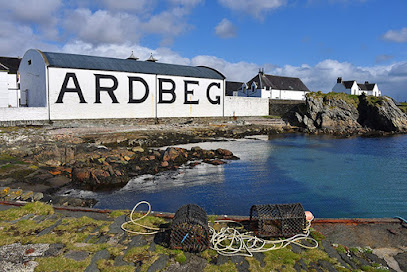
Finlaggan Trust
Explore the rich history and stunning landscapes of Finlaggan Trust, the ancient seat of the Lords of the Isles on Islay.
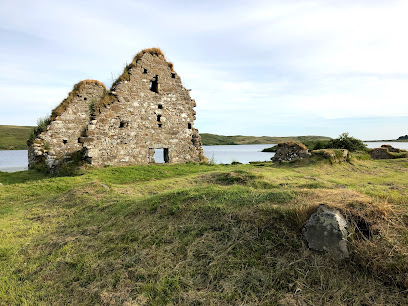
Caol Ila Distillery
Experience the heritage of Islay with a visit to Caol Ila Distillery, where exquisite whisky meets stunning coastal views.

The Museum of Islay Life
Explore the rich history and culture of Islay at The Museum of Islay Life, a unique tourist attraction in Scotland's Inner Hebrides.
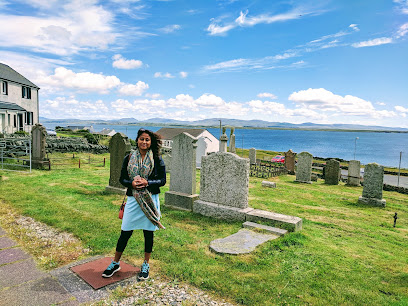
Achamore Gardens
Discover the breathtaking beauty of Achamore Gardens on the Isle of Gigha, a must-visit botanical paradise for nature lovers and tourists.
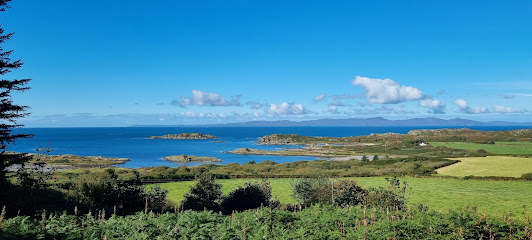
Old Kilchoman Parish Church
Explore the Old Kilchoman Parish Church, a historic landmark on the Isle of Islay, where spirituality meets breathtaking scenery in a serene landscape.
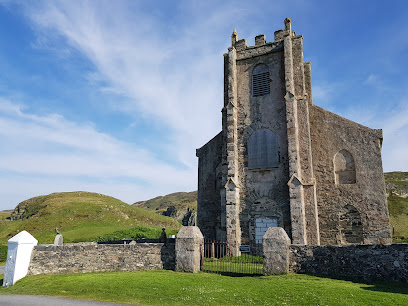
Dunyvaig Castle
Discover the captivating history of Dunyvaig Castle on the Isle of Islay, a stunning landmark that showcases Scotland's medieval past amidst breathtaking landscapes.
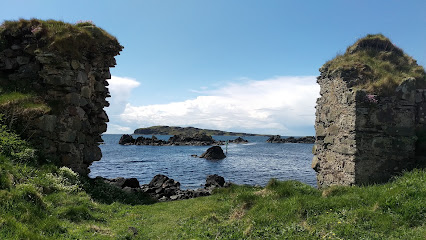
Kilnave Chapel and Cross
Discover the serene beauty and rich history of Kilnave Chapel and Cross, a captivating landmark on the Isle of Islay.
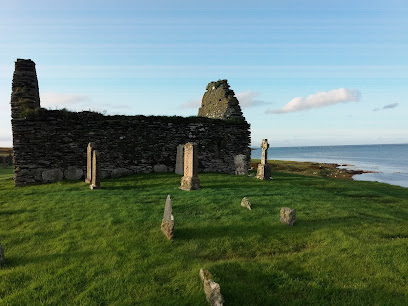
Port Ellen - Kennacraig Ferry
Experience breathtaking views and seamless transport on the Port Ellen to Kennacraig Ferry, your gateway to the beautiful Isle of Islay.
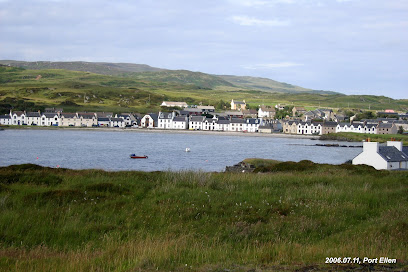
Soldiers Rock
Explore the breathtaking views and serene beauty of Soldiers Rock, a natural gem on the Isle of Islay, perfect for nature lovers and adventurers alike.
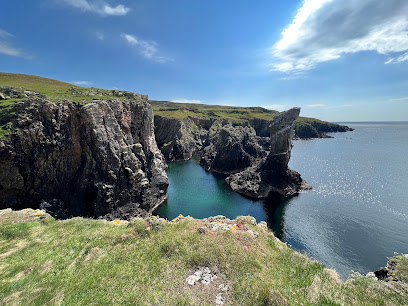
Ballinaby Standing Stones
Discover the ancient Ballinaby Standing Stones on Islay, where history and stunning landscapes intertwine for a unique cultural experience.
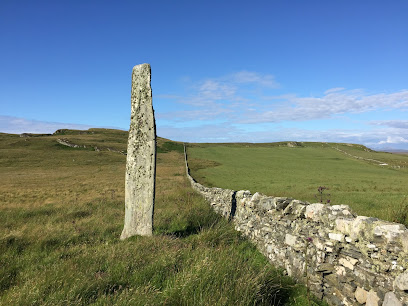
Cable Bay
Experience the stunning coastal beauty of Cable Bay on the Isle of Colonsay, where nature meets tranquility in a breathtaking landscape.
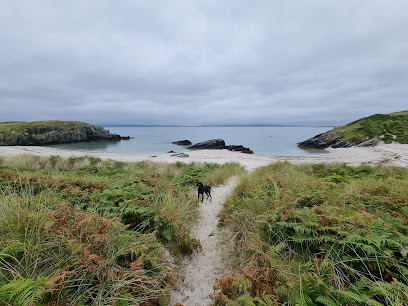
Kilchoman Cross
Explore Kilchoman Cross, a historical landmark on the Isle of Islay, offering stunning views and a glimpse into the region's rich heritage.
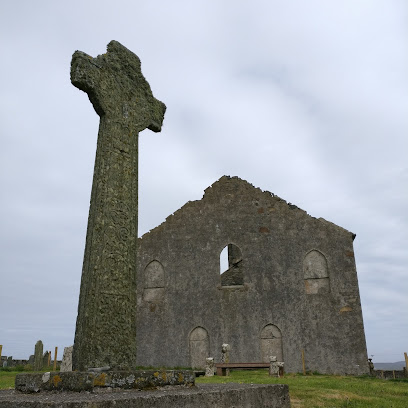
Essential places to dine
SeaSalt Bistro & Takeaway
Experience exquisite seafood dining at SeaSalt Bistro & Takeaway in Port Ellen, Isle of Islay – where fresh flavors meet stunning coastal views.
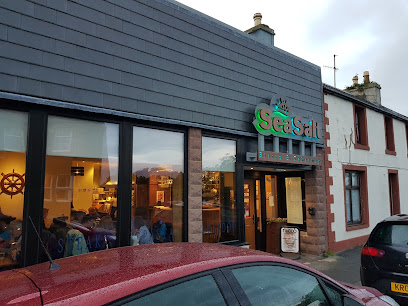
The Islay Hotel
Experience comfort and local charm at The Islay Hotel in Port Ellen—your gateway to explore Scotland's enchanting Isle of Islay.

Peatzeria - Restaurant and Takeaway
Experience authentic Italian flavors at Peatzeria in Bowmore—where delicious pizzas meet warm hospitality on Islay.
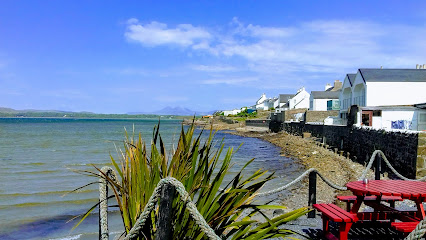
The Lochside Hotel & Restaurant
Discover unparalleled comfort and exquisite dining at The Lochside Hotel & Restaurant on the beautiful Isle of Islay.
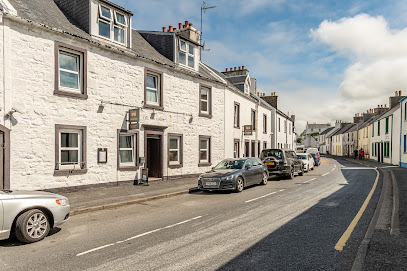
Port Charlotte Hotel
Discover Scottish hospitality at its finest with comfort and stunning views at Port Charlotte Hotel on Isle of Islay.
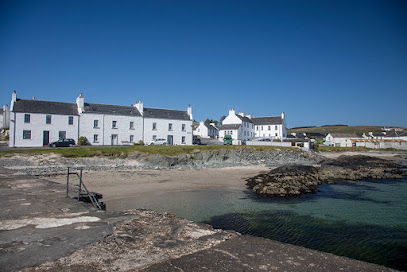
Bowmore Hotel
Discover unparalleled comfort at Bowmore Hotel in scenic Bowmore, Isle of Islay - where tradition meets modern hospitality.

Bridgend Hotel
Discover the charm of Bridgend Hotel on Isle of Islay - where comfort meets local culture amidst stunning landscapes.

The Machrie
Discover unparalleled luxury at The Machrie Hotel on the Isle of Islay – a perfect retreat for golf lovers and culinary enthusiasts alike.
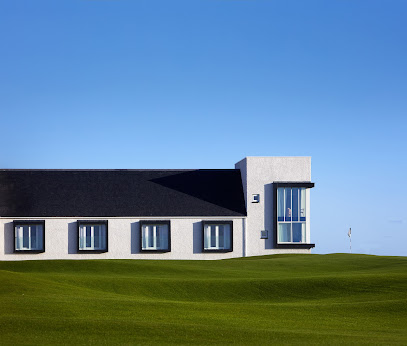
The Ardview Inn
Discover The Ardview Inn in Port Ellen: A welcoming pub offering traditional Scottish cuisine and local whiskies amidst breathtaking Isle of Islay scenery.
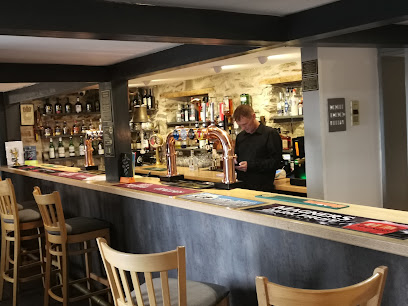
Ballygrant Inn
Experience the warmth of Scottish hospitality at Ballygrant Inn on the Isle of Islay - where comfort meets tradition.
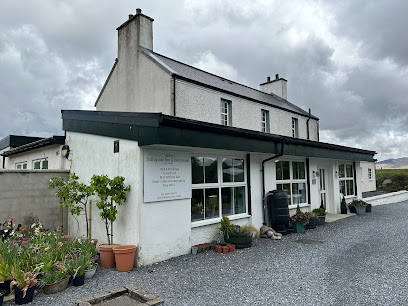
The Harbour Inn
Discover comfort and local flavor at The Harbour Inn on the beautiful Isle of Islay—your gateway to adventure and relaxation.

No. 1 Charlotte Street
Discover comfort and local charm at No. 1 Charlotte Street – your perfect base on the scenic Isle of Islay.

Lochindaal Hotel
Discover comfort and local flavors at Lochindaal Hotel in Port Charlotte – your gateway to Islay's stunning landscapes and whisky heritage.
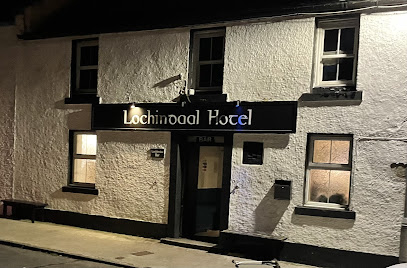
Lochindaal Seafood Kitchen
Experience exquisite seafood dining at Lochindaal Seafood Kitchen in Port Charlotte - where fresh flavors meet stunning views on Islay.
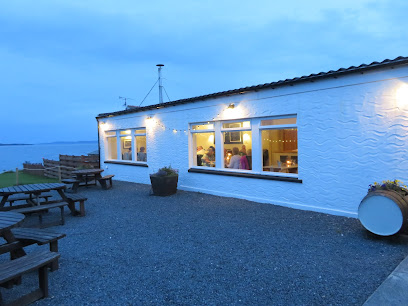
Taj Mahal Indian Restaurant
Experience authentic Indian cuisine at Taj Mahal Indian Restaurant in Bowmore - a culinary delight on the Isle of Islay.
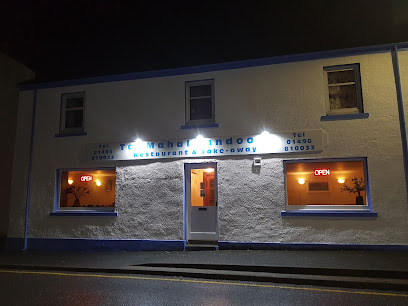
Markets, malls and hidden boutiques
Co-op Food - Islay Bowmore - Main Street
Discover the heart of Bowmore at Co-op Food, where convenience meets local flavor on the Isle of Islay.
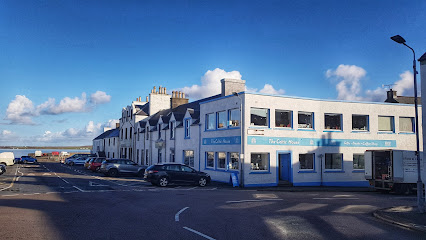
The Celtic House
Discover the charm of The Celtic House in Bowmore, combining unique gifts and delightful café treats on the Isle of Islay.
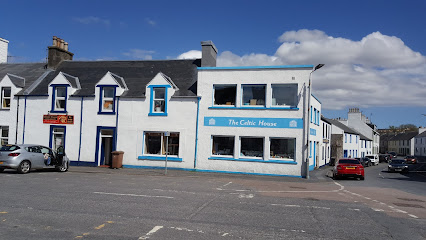
Islay Woollen Mill Co Ltd
Explore Islay Woollen Mill: A hub of traditional Scottish textile craftsmanship offering unique woolen products amidst stunning island scenery.
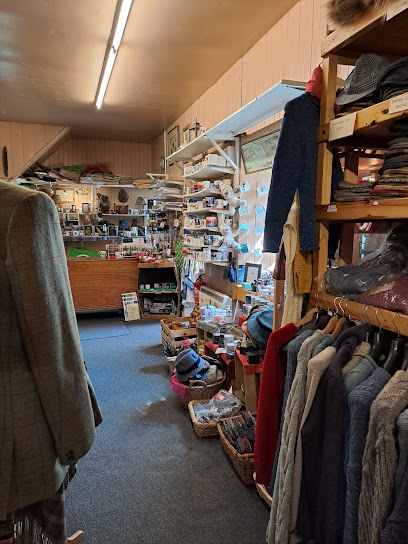
Labels
Discover the heart of Bowmore at Labels Coffee Shop, a cozy retreat for coffee lovers on the Isle of Islay.
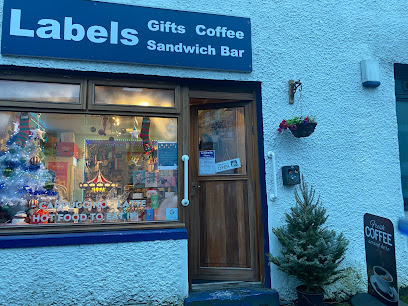
Bruichladdich Mini Market
Experience the local charm of Bruichladdich Mini Market, your one-stop shop for essentials and delightful café treats on the Isle of Islay.
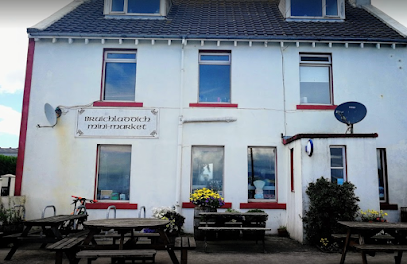
Persabus Pottery, Ceramics and Art
Explore the artistic treasures of Persabus Pottery on the enchanting Isle of Islay, where craftsmanship meets creativity.
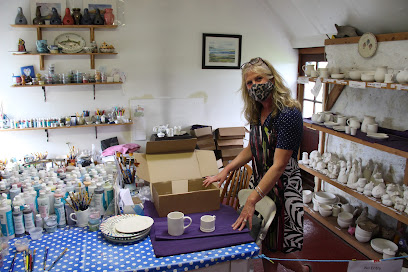
The Islay Shop
Explore The Islay Shop for unique gifts, local crafts, and delightful souvenirs in Bowmore, Isle of Islay, and bring a piece of Islay home.
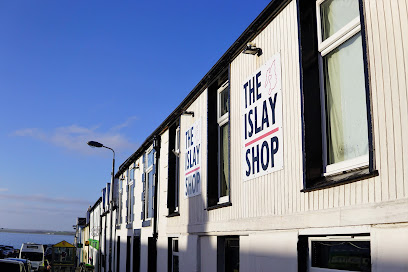
Bridgend Shop
Discover Bridgend Shop: A convenient one-stop destination for fuel, groceries, and local brews on the stunning Isle of Islay.
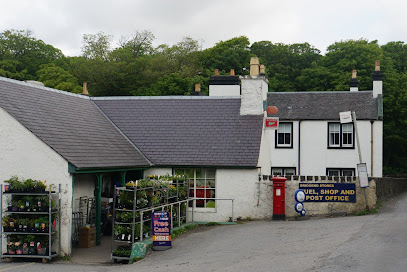
Tormisdale Croft Crafts
Discover the enchanting world of handmade crafts at Tormisdale Croft Crafts on the beautiful Isle of Islay, where local artistry meets stunning scenery.
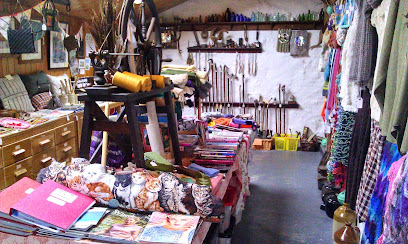
Co-op Food - Islay Port Ellen - Frederick Cres
Discover the convenience of Co-op Food in Port Ellen, your go-to stop for local flavors and essential supplies on the Isle of Islay.
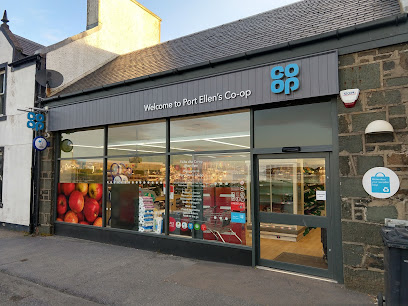
Islay Home Stores
Explore unique homewares and local crafts at Islay Home Stores in Bowmore, Isle of Islay – a charming shopping experience awaits.

A S Porter - Family Butcher
Discover the rich flavors of Islay at A S Porter - Family Butcher, where quality meats and local produce come together in Bowmore's vibrant culinary scene.
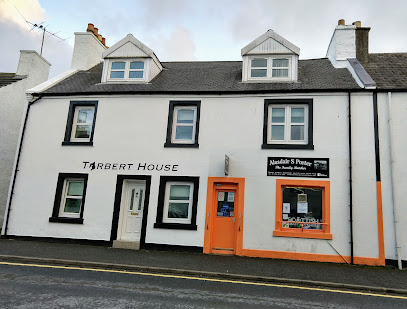
Little Charlottes Cafe
Experience the cozy charm of Little Charlotte's Cafe in Port Ellen, Isle of Islay, where exceptional coffee meets a warm, inviting atmosphere.
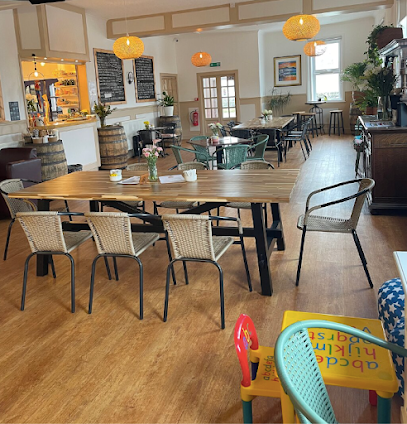
Copper Still Coffee
Experience the essence of Islay at Copper Still Coffee, where rich brews and cozy vibes meet stunning coastal views.
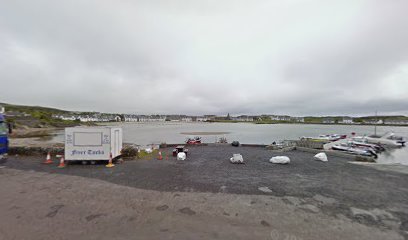
SPAR Port Ellen
Discover convenience and local flavors at SPAR Port Ellen, your essential stop for snacks and goods on the beautiful Isle of Islay.
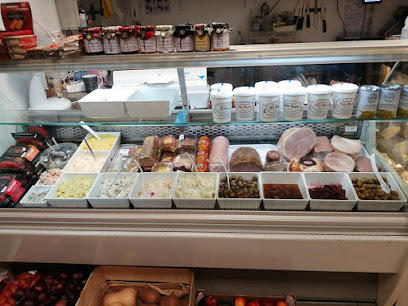
Essential bars & hidden hideouts
SeaSalt Bistro & Takeaway
Discover the exquisite seafood and warm ambiance at SeaSalt Bistro & Takeaway in Port Ellen, Isle of Islay, a culinary haven for seafood lovers.
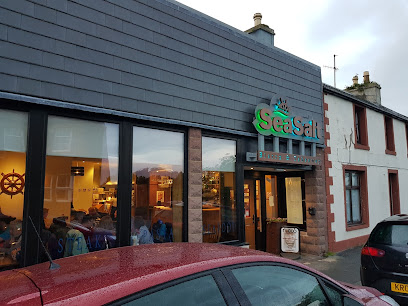
The Islay Hotel
Experience the charm of The Islay Hotel in Port Ellen, where exquisite dining meets cozy accommodations and stunning coastal views.

Peatzeria - Restaurant and Takeaway
Discover the flavors of Italy at Peatzeria, Bowmore's beloved restaurant for delicious pizzas and a cozy dining experience.
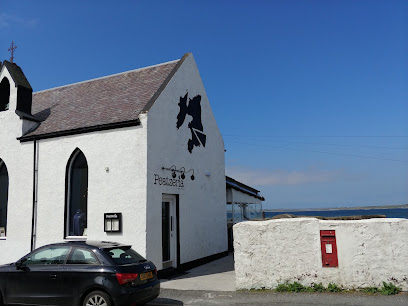
The Lochside Hotel & Restaurant
Experience the charm of The Lochside Hotel & Restaurant on Isle of Islay, where comfort meets culinary excellence amidst breathtaking views.

Port Charlotte Hotel
Experience the warmth of Islay at Port Charlotte Hotel, your perfect retreat for local whiskies and authentic cuisine.
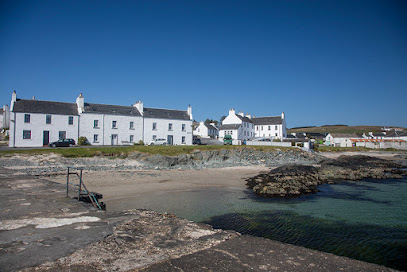
The Machrie
Discover the perfect blend of luxury, dining, and golf at The Machrie, a stunning hotel and restaurant on the Isle of Islay.
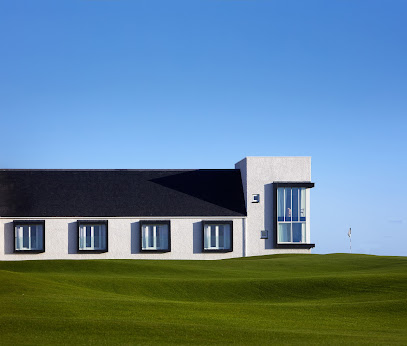
The Ardview Inn
Discover the charm of The Ardview Inn in Port Ellen, where local flavors meet the warmth of Islay's hospitality.
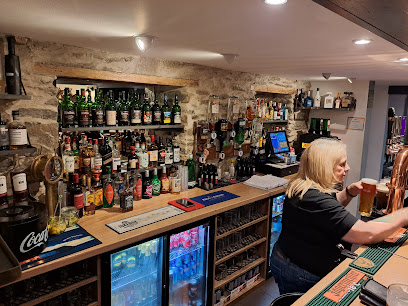
Ballygrant Inn
Experience the warmth of Scottish hospitality at Ballygrant Inn, your perfect getaway on the stunning Isle of Islay with delicious British cuisine.
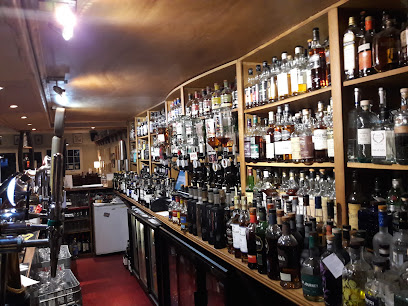
The Harbour Inn
Experience the charm of The Harbour Inn, where comfort meets local flavors on the stunning Isle of Islay.

No. 1 Charlotte Street
Experience the warmth and charm of No. 1 Charlotte Street in Port Ellen, Isle of Islay, a perfect blend of bar and hotel for every traveler.

Lochindaal Hotel
Discover the warmth of Isle of Islay at Lochindaal Hotel, where comfort meets local flavor in a stunning coastal setting.
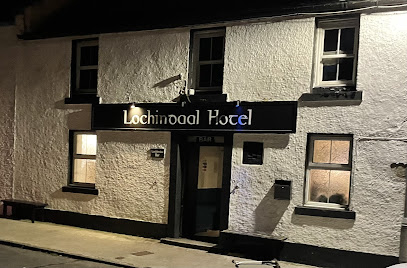
Islay Oyster Shed
Experience the unrivaled flavors of fresh oysters and seafood at Islay Oyster Shed, nestled in the stunning Isle of Islay.
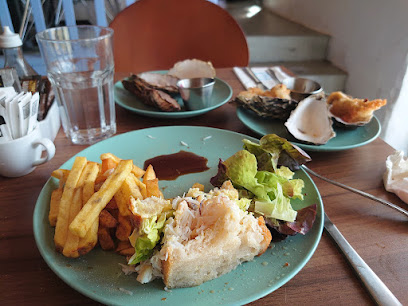
Bowmore Hotel Restaurant
Savor local flavors at Bowmore Hotel Restaurant, the culinary gem of Islay offering a delightful dining experience with a view.
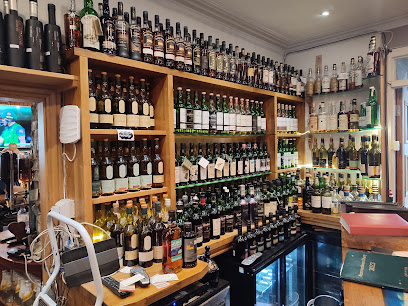
The Cottage Cafe & fish bar
Experience the flavors of Islay at The Cottage Cafe & Fish Bar, where fresh seafood meets Scottish hospitality in the heart of Bowmore.
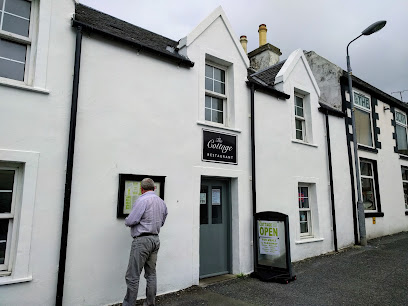
An Tigh Seinnse
Experience the warmth and charm of An Tigh Seinnse, a beloved pub and restaurant in Portnahaven, Isle of Islay, offering local cuisine and drinks.
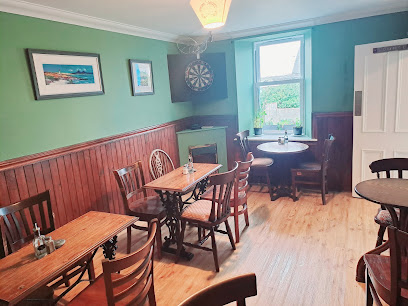
Local Phrases about Isle of Islay
-
- HelloHallo
[ha-loh] - GoodbyeSlàn leat
[slahn lat] - YesTha
[ha] - NoChan eil
[khan eyl] - Please/You're welcomeMa 'se do thoil e
[ma sheh doh hoyl eh] - Thank youTapadh leat
[tah-pah lat] - Excuse me/SorryThoir m'aire
[ho-ir mah-reh] - How are you?Ciamar a tha thu?
[kya-mar a ha hoo] - Fine. And you?Gu math. Agus thu?
[goo mah. ah-gus hoo] - Do you speak English?A bheil Gàidhlig agad?
[a vel gah-leek ah-gut] - I don't understandCha tuig mi
[kha tig mee]
- HelloHallo
-
- I'd like to see the menu, pleaseBu toil leam faicinn an meniu, ma 'se do thoil e
[boo toyl l-yam fah-kin an men-yoo, ma sheh doh hoyl eh] - I don't eat meatChan ith mi feòil
[khan eet mee fey-ohl] - Cheers!Slàinte!
[slahn-cheh] - I would like to pay, pleaseBu toil leam pàighinn, ma 'se do thoil e
[boo toyl l-yam pah-ee-nyin, ma sheh doh hoyl eh]
- I'd like to see the menu, pleaseBu toil leam faicinn an meniu, ma 'se do thoil e
-
- Help!Cobhair!
[koh-var] - Go away!Falbh bhuam!
[fal-iv voo-ahm] - Call the Police!Cuiraibh an Poileas!
[coo-reev an po-lee-ahs] - Call a doctor!Cuiraibh dotair!
[coo-reev doh-tahr] - I'm lostTha mi air chall
[ha mee er khal] - I'm illTha mi tinn
[ha mee teen]
- Help!Cobhair!
-
- I'd like to buy...Bu toil leam a cheannach...
[boo toyl l-yam ah khan-ach] - I'm just lookingTha mi a' coimhead
[ha mee ah koh-im-yat] - How much is it?Dè an sàs?
[jay an sahs] - That's too expensiveTha sin ro bhog
[ha sheen roh vok] - Can you lower the price?An urrainn dhut an t-sàs a ìsliochd?
[an oor-in doot an sahs a eesh-lohch]
- I'd like to buy...Bu toil leam a cheannach...
-
- What time is it?Dè an t-am?
[jay an tahm] - It's one o'clockTha e aon uair
[ha eh ayn oo-er] - Half past (10)Leath uair deug
[leh-ah oo-er jook] - MorningMadainn
[mah-dan] - AfternoonFeasgar
[fes-gar] - EveningFosgladh
[fos-glah] - YesterdayDèiridh
[jay-ree] - TodayAn-diugh
[an-joo] - TomorrowA-màireach
[ah-mah-reh] - 1Aon
[ayn] - 2Dà
[dah] - 3Trì
[tree] - 4Ceithir
[keh-hir] - 5Còig
[koh-ig] - 6Sia
[shee-ah] - 7Seachd
[shachk] - 8Ochd
[okht] - 9Naoi
[nee] - 10Deich
[jeh-ch]
- What time is it?Dè an t-am?
-
- Where's a/the...?Càite a bheil...?
[ka-tee a vel] - What's the address?Dè an seòladh?
[jay an shohl-ah] - Can you show me (on the map)?An urrainn dhut a chur an sealladh (air a' mhapa)?
[an oor-in doot a khoor an shal-achk (er ah vah-pa)] - When's the next (bus)?Cuin a thèid am bus as tioram?
[kween a hayt am bus as cheer-am] - A ticket (to ....)Ticead (gu ....)
[tee-ket (goo)]
- Where's a/the...?Càite a bheil...?
History of Isle of Islay
-
The Isle of Islay, often referred to as the 'Queen of the Hebrides,' has a rich history of early settlements dating back to the Mesolithic period. Archaeological finds, such as tools and midden sites, indicate human presence on the island over 9,000 years ago. The ancient inhabitants of Islay lived in small communities, relying on fishing, hunting, and gathering for their survival.
-
During the early medieval period, Islay became part of the Kingdom of Dal Riata, which spanned parts of modern-day Scotland and Ireland. This Gaelic kingdom played a crucial role in the spread of Christianity in the region. The island's strategic location made it a significant center for trade and cultural exchange. The ruins of several early Christian chapels and monasteries can still be found on Islay, reflecting its importance during this era.
-
In the 14th and 15th centuries, the Isle of Islay was the heartland of the Lordship of the Isles. The MacDonald clan, led by the powerful Lords of the Isles, ruled over a vast maritime domain that included the Hebrides and parts of the mainland. Dunyvaig Castle, located on Islay's south coast, served as a stronghold for the MacDonalds. The castle's ruins still stand today, a testament to the island's turbulent medieval history.
-
Islay is world-renowned for its whisky, a tradition that dates back to at least the 16th century. The island's unique combination of peat, water, and climate contribute to the distinctive flavor of Islay whiskies. Distilleries such as Bowmore, Laphroaig, and Ardbeg have been producing whisky for centuries, and each has its own rich history. The island's whisky heritage remains a vital part of its cultural identity, attracting enthusiasts from around the globe.
-
The Kildalton Cross, located near Port Ellen, is one of the finest examples of early Christian sculpture in Scotland. Dating back to the 8th century, this intricately carved stone cross stands as a monument to the island's early Christian heritage. The cross features detailed carvings of biblical scenes and Celtic knotwork, showcasing the artistic skills of the time. It remains one of Islay's most treasured historical artifacts.
-
During World War II, Islay played a significant role as a base for Allied forces. The island's airfields at Port Ellen and Glenegedale were used for training and operational flights, including anti-submarine patrols. The wreck of the American ship SS Tuscania, which was torpedoed off Islay's coast in 1918 during World War I, and the Otranto disaster, where another troopship sank in 1918, are poignant reminders of the island's wartime history.
-
Islay's rich cultural heritage is celebrated through various festivals throughout the year. The Islay Festival of Music and Malt, also known as Fèis Ìle, is a week-long event held annually in late May or early June. It showcases traditional music, dancing, and, of course, whisky tastings. The island also hosts the Islay Book Festival and the Cantilena Festival, which celebrate literature and classical music, respectively, reflecting the diverse cultural life of this Hebridean island.
Isle of Islay Essentials
-
The Isle of Islay is located off the west coast of Scotland in the Inner Hebrides. The most common way to reach Islay is by ferry or plane. Caledonian MacBrayne (CalMac) operates regular ferry services from Kennacraig on the mainland to Port Ellen and Port Askaig on Islay. The journey takes around 2 hours and 20 minutes. Alternatively, LoganAir offers flights from Glasgow Airport to Islay Airport, with a flight time of about 45 minutes. Both options provide stunning views of the Scottish coastline and islands.
-
Once on the Isle of Islay, transportation options include car rentals, taxis, and local bus services. Car rentals are available at Islay Airport and in the main towns, providing the flexibility to explore the island at your own pace. Taxis can be pre-booked for both short and long journeys. Local bus services operated by Islay Coaches connect various parts of the island, including Port Ellen, Bowmore, and Port Askaig. Bicycles are also a popular way to explore the island, with several rental options available.
-
The official currency in the United Kingdom is the British Pound Sterling (GBP). Credit and debit cards are widely accepted on Islay, including in hotels, restaurants, and shops. However, it is advisable to carry some cash, especially for smaller purchases and in more rural areas. ATMs are available in the main towns such as Bowmore and Port Ellen. It is recommended to inform your bank of your travel plans to avoid any issues with card transactions.
-
The Isle of Islay is generally a safe destination for tourists, with low crime rates. However, standard precautions should still be taken. Keep an eye on your belongings in crowded places and avoid walking alone at night in unfamiliar areas. There are no specific high-crime areas targeting tourists on Islay, but it is always best to stay vigilant and aware of your surroundings. Emergency services are reliable and can be reached by dialing 999.
-
In case of emergency, dial 999 for police, fire, or medical assistance. Islay has a hospital in Bowmore that can handle most medical issues, while more severe cases may require transfer to the mainland. It is advisable to have travel insurance that covers medical emergencies. For minor health issues, pharmacies are available in Bowmore and other main towns where you can purchase over-the-counter medications.
-
Fashion: Do wear layers and waterproof clothing, as the weather can be unpredictable. Don't wear overly formal attire; casual clothing is generally acceptable. Religion: Do respect local customs and traditions, especially when visiting religious sites. Don't enter churches during services unless invited. Public Transport: Do be respectful and considerate to fellow passengers. Don't play loud music or engage in disruptive behavior. Greetings: Do greet people with a friendly 'hello' or a nod. Don't be overly familiar with strangers. Eating & Drinking: Do try local delicacies, including Islay's famous whisky. Don't refuse an offer of hospitality, as it is considered impolite.
-
To experience Islay like a local, visit the local distilleries and sample the island's renowned single malt whiskies. Participate in community events and festivals, such as the Islay Festival of Music and Malt (Fèis Ìle), held annually in late May. Explore the island's natural beauty by taking walks along the coastline and through the nature reserves. Engage with locals who are often friendly and eager to share stories about the island's history and culture. Don't miss the chance to visit historical sites such as the Kildalton Cross and the ruins of Finlaggan, the ancient seat of the Lords of the Isles.
Trending Landmarks in Isle of Islay
-
Peatzeria - Restaurant and Takeaway
-
Laphroaig Distillery
-
Kilchoman Distillery
-
American Monument
-
The Machrie
-
Bowmore Distillery
-
Kildalton Cross
-
The Museum of Islay Life
-
Carraig Fhada Lighthouse
-
Skerrols House
-
South Islay Parish: Kilarrow Church
-
Persabus farm, Accommodation and Pottery
-
Dunyvaig Castle
-
Kilnave Chapel and Cross
-
Tormisdale Croft Crafts
Nearby Cities to Isle of Islay
-
Things To Do in Glasgow
-
Things To Do in Belfast
-
Things To Do in Stirling
-
Things To Do in Edinburgh
-
Things To Do in Kirk Michael
-
Things To Do in Peel
-
Things To Do in Ramsey
-
Things To Do in Laxey
-
Things To Do in Port Erin
-
Things To Do in Onchan
-
Things To Do in Port St Mary
-
Things To Do in Douglas
-
Things To Do in Ballasalla
-
Things To Do in Castletown
-
Things To Do in Dundee



